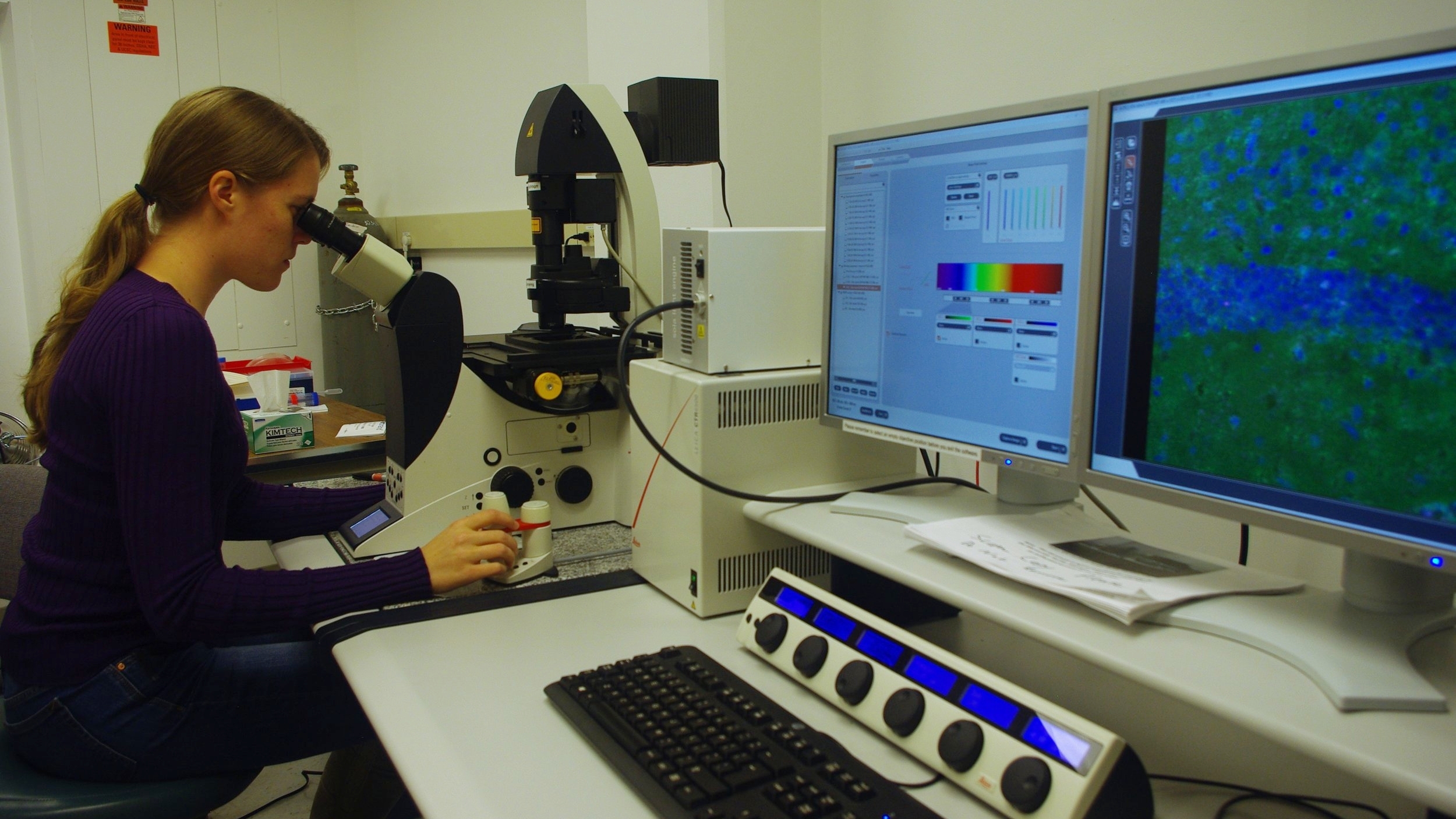Summary
I did my Ph.D. research in Don Smith's lab in the Microbiology and Environmental Toxicology Department at UC Santa Cruz, with Dr. Kathi Lefebvre (NOAA Fisheries, Seattle) as my co-adviser. I studied a neurotoxin called domoic acid, which is produced by a type of plankton in the ocean. Organisms that feed on this plankton can accumulate domoic acid and transfer the toxin further up the marine food web, poisoning marine mammals, seabirds and occasionally humans. Domoic acid can then enter the brain and over-excite neurons; high doses can cause seizures, brain lesions and memory loss.
My goal was to determine whether low doses of domoic acid -- too low to produce visible signs of toxicity -- could still cause neurological damage after long-term repeated exposure. I studied how the brain responds to these low doses in a mouse model. I wielded bioinformatics tools, tiny fluorescent tags illuminated by giant microscopes, and cutting-edge electrophysiological technology to search for changes at the genetic, cellular, and neuronal network levels.
Scientific publications
Lefebvre KA, Kendrick PS, Ladiges W, Hiolski EM, Ferriss BE, Smith DR, Marcinek DJ.(2017). Chronic low-level exposure to the common seafood toxin domoic acid causes cognitive deficits in mice. Harmful Algae, Apr; 64:20-29
Hiolski EM, Ito S, Beggs JM, Smith DR, Litke AM. (2016). Domoic acid disrupts the activity and connectivity of neuronal networks in organotypic brain slice cultures. NeuroToxicology, Sep; 56:215-224.
Timme N, Ito S, Myroshnychenko M, Yeh FC, Hiolski E, Hottowy P, Beggs JM. (2014). Multiplex networks of cortical and hippocampal neurons revealed at different timescales. PLoS One 9(12).
Ito S, Yeh FC, Hiolski E, Rydygier P, Gunning DE, Hottowy P, Timme N, Litke AM, Beggs JM. (2014). Large-scale, high-resolution multielectrode-array recording depicts functional network differences of cortical and hippocampal cultures. PLoS One 9(8).
Hiolski EM, Kendrick PS, Frame ER, Myers MS, Bammler TK, Beyer RP, Farin FM, Wilkerson HW, Smith DR, Marcinek DJ, Lefebvre KA. (2014). Chronic low-level domoic acid exposure alters gene transcription and impairs mitochondrial function in the CNS. Aquatic Toxicology 155:151-9.
Lefebvre KA, Frame ER, Gulland F, Hansen JD, Kendrick PS, Beyer RP, Bammler TK, Farin FM, Hiolski EM, Smith DR, Marcinek DJ. (2012). A novel antibody-based biomarker for chronic algal toxin exposure and sub-acute neurotoxicity. PLoS One 7(5).
Posters and presentations
Hiolski E, et al. (October 2014) Domoic acid alters neuronal activity and signaling patterns in organotypic brain slice cultures. Poster presented at the 16th International Conference on Harmful Algae, Wellington, New Zealand.
Hiolski E, et al. (June 2014) Linking learning deficits toneurological changes induced by chronic domoic acid exposure. Poster presented at the Oceans & Human Health Gordon Research Conference. Awarded 1st place prize for graduate student posters.
Hiolski E, et al. (November 2012) Domoic Acid Alters Neural Networks In Organotypic Brain Cultures. Poster presented at the 15th International Conference on Harmful Algae, Changwon, South Korea.
Hiolski E, et al. (November 2011) Chronic Low-Dose Exposure to Domoic Acid Contributes to Alterations in Neural Health and Homeostasis. Poster presented at the 6th National Symposium on Harmful Algae, Austin, TX.
